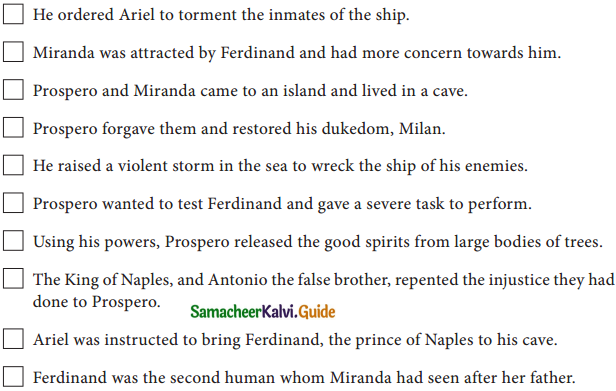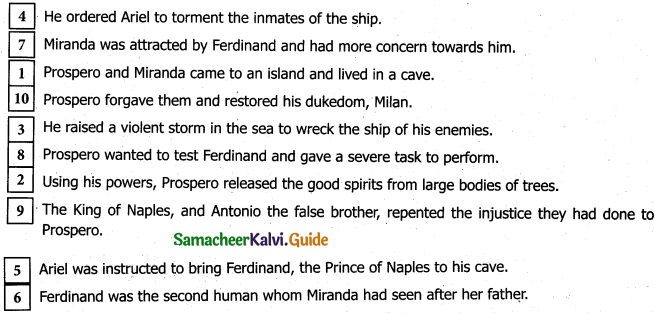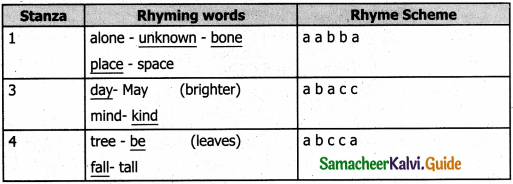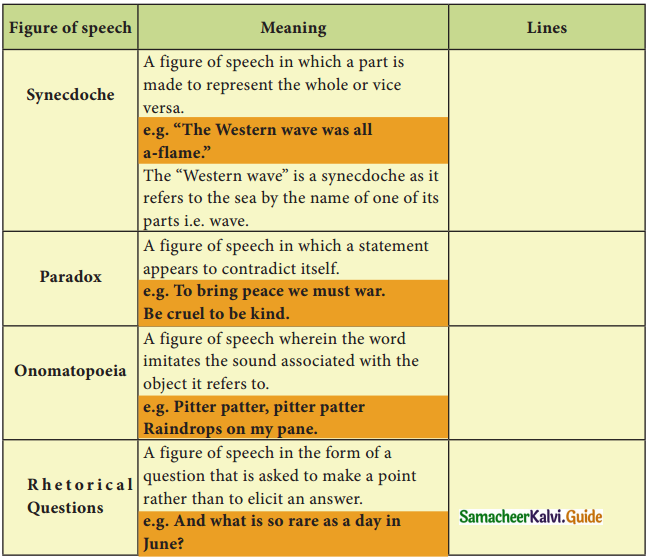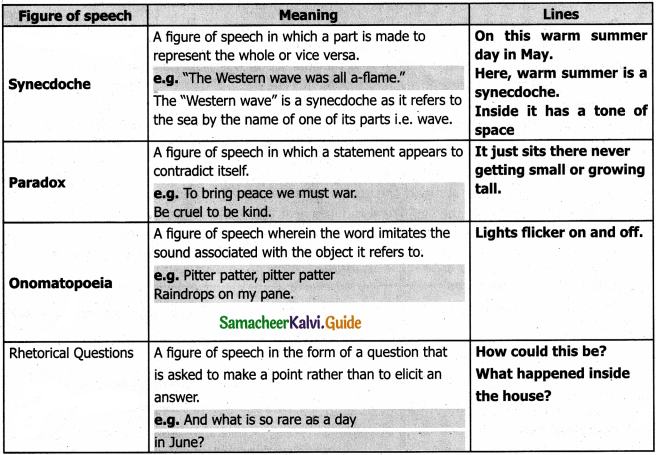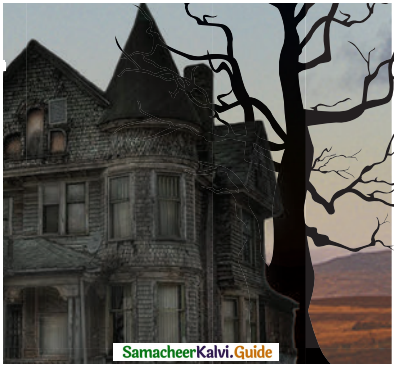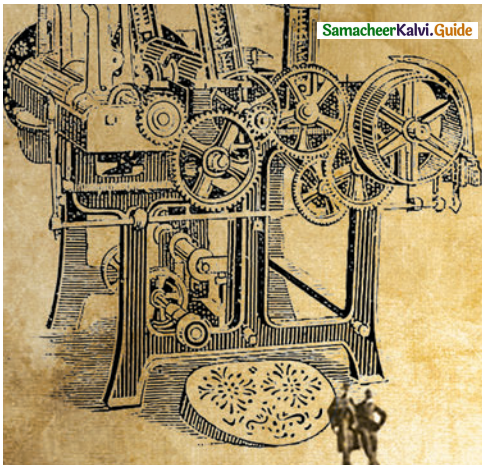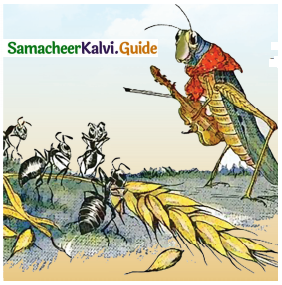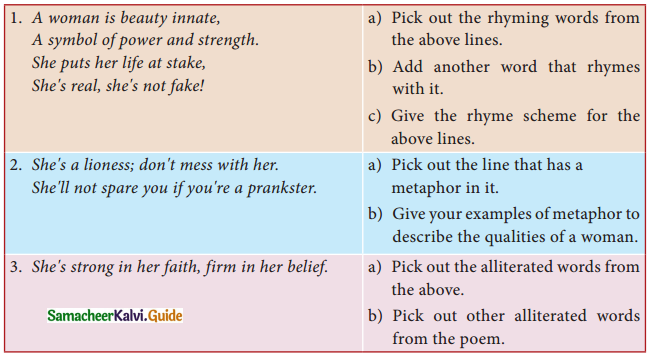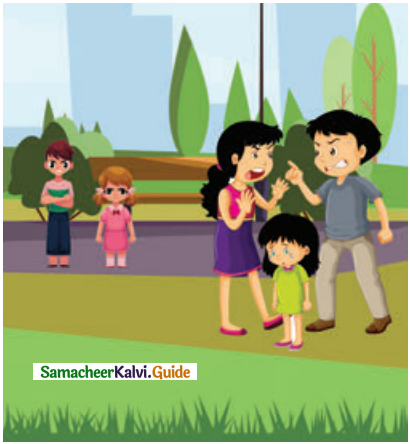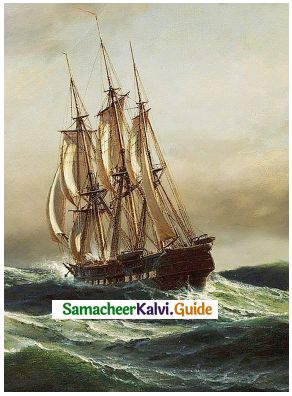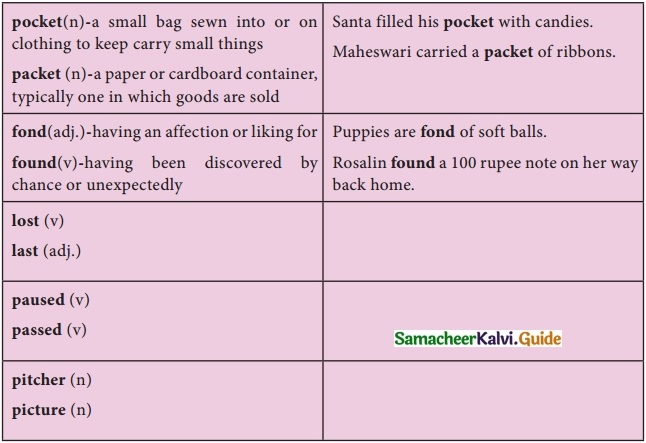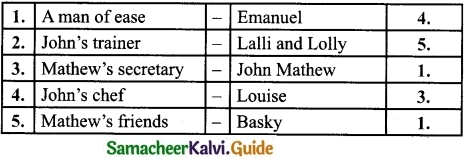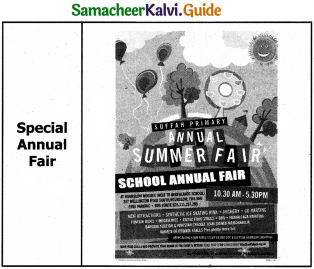Tamilnadu State Board New Syllabus Samacheer Kalvi 10th English Guide Pdf Supplementary Chapter 3 The Story of Mulan Questions and Answers, Summary, Notes.
Tamilnadu Samacheer Kalvi 10th English Solutions Supplementary Chapter 3 The Story of Mulan
10th English Guide Supplementary The Story of Mulan Textbook Questions and Answers
A. Choose the best answers.
Question 1.
Mulan goes to the battle instead of her father because …………………
(a) she wants to be a soldier
(b) she was asked to join the army,
(c) her father is old
(d) her brother is sick.
Answer:
(c) her father is old
![]()
Question 2.
What did Mulan do before leaving the house?
(a) took leave from her mother
(b) cut off her hair
(c) prayed
(d) made a dress for war
Answer:
(b) cut off her hair
Question 3.
What is the story about?
(a) winning
(b) friendship
(c) women empowerment
(d) patriotism
Answer:
(c) women empowerment
![]()
Question 4.
The emperor asked Mulan to stay with him in the palace as his ………………….
(a) wife
(b) royal advisor
(c) army general
(d) friend
Answer:
(b) royal advisor
Question 5.
The emperor gave Mulan …………………..
(a) six horses and six swords
(b) a death sentence
(c) gold
(d) six camels
Answer:
(a) six horses and six swords
![]()
Question 6.
How did the people of the village react to Mulan after her return from the battle?
(a) cheered her
(b) mocked her
(c) punished her
(d) scolded he
Answer:
(a) cheered her
B. Identify the character or speaker of the following lines.
Question 1.
Did I hear about it in town?
Answer:
Mulan’s father
Question 2.
I am your son now?
Answer:
Mulan
![]()
Question 3.
The General is a woman?
Answer:
The soldiers
Question 4.
Mulan, stay with me in the palace?
Answer:
The emperor of china
![]()
Question 5.
You are too kind, sir?
Answer:
Mulan
C. Answer the following questions in a sentence or two.
Question 1.
What was the emperor’s order?
Answer:
The Emperor’s order was that one man from each Chinese family must leave his family. to join the army.
Question 2.
Where did Mulan’s father hear about the emperor’s order?
Answer:
Mulan’s father heard about the emperor’s order in the town.
![]()
Question 3.
Why couldn’t Mulan’s brother go to war?
Answer:
Mulan’s brother couldn’t go to the war because he was a child.
Question 4.
Why did Mulan disguise herself as a man?
Answer:
Women are not allowed to join the army. So Mulan disguised herself as a man.
Question 5.
How did the soldiers become sick?
Answer:
A bad fever swept through the army. So, many soldiers became sick.
![]()
Question 6.
How would she be punished if found guilty?
Answer:
She would be killed if found guilty.
Question 7.
Why did the emperor give her fine gifts?
Answer:
The Emperor gave her fine gifts because she won the battle and saved China.
![]()
Question 8.
How did the soldiers come to know about Mulan’s real identity?
Answer:
When Mulan was affected by fever, the doctor examined her in the tent. He came to know that she was a woman and told the soldiers. Thus they came to know about Mulan’s real identity.
D. Answer the following questions in a paragraph.
Question 1.
Sketch the character of Mulan?
Answer:
Mulan was a brave warrior who saved China from the enemies. She was determined, courageous and intelligent. She was unselfish too. The incident which best attests to this trait was after returning from the war, the Emperor offered her the post of royal advisor. She refused the post and simply told that she wanted to return home. Mulan’s determination helped her through her adventures defeating the enemies’ army. She never gave up in bad situations. At war, she was very intelligent and was a quick planner. This attitude won her the war for the Chinese. She fought in the battle for twelve years and gained high merit. She refused any rewards except for six fine horses and six fine swords.
(OR)
Title: The Story of Mulan
Author: Unknown
Character: Mulan
Theme: The empowered woman is powerful beyond measure.
Mulan was a teenage girl. She was brave and determined to join the army. She had more concern for her father. She acted as a dedicated soldier in the army. She was in charge of the soldiers. Later she was made the General of the army. She never gave up in bad situations. When she was sick she came out and advised the soldiers how they should attack the enemy.
She was intelligent to tackle the problems. They won the battle. The emperor was very glad. Emperor offered him the post of a royal advisor. The emperor was so glad that Mulan ended the long war. Though the emperor wished her to stay in the palace, She preferred to be with her family. She accepted only six fine horses and six fine swords as rewards. Thus Mulan save China from the enemies.
(OR)
- Mulan was a teenage girl.
- She was brave and intelligent.
- She joined the army.
- She was in charge of some soldiers.
- Later she was made the General of the army.
- They won the battle.
- The emperor was glad.
- He gave her six fine horses and six fine swords as rewards.
- Mulan saved China from the enemies.
![]()
Question 2.
Do you agree with Mulan’s decision to go to war? Justify
Answer:
I agree with Mulan’s decision to go to war. She did not want her father to suffer in his old age. She had the patriotic spirit to save the country. She was also optimistic in her approach. She never bothered about her gender. She had the courage and determination to join the army and fight for the country.
She had no fear of death. Her father was afraid that the emperor would kill her for being a woman. But she dared to fight in the battle. She cut her hair like a man. She wore her father’s robe and picked up the sword. She climbed on a horse and bade him goodbye. She went to join the army.
- I agree with Mulan’s decision to go to war.
- She did not want her father to suffer in his old age.
- She had a patriotic spirit.
- She was optimistic.
- She had no fear of death.
- She was courageous to fight for her country.
- But her father was afraid.
- She dared to fight in the battle.
- She cut her hair like a man.
- She climbed on the horse and went to fight in the battle.
- Finally she went to join the army.
![]()
Question 3.
Rearrange the following sentence in a coherent order.
Exercise: 1
1. (a) Mulan the General of the army, became sick too.
2. (b) A heavy fever swept through the army.
3. (c) The soldiers said, “we will not fight for a woment.
4. (d) “The General is a woman” yelled the soldiers.
5. (e) When the doctor came out of Mulan’s tent, he knew the truth.
Answers:
1. (b) A heavy fever swept through the army.
2. (a) Mulan the General of the army, became sick too.
3. (e) When the doctor came out of Mulan’s tent, he knew the truth.
4. (d) “The General is a woman” yelled the soldiers.
5. (c) The soldiers said, “we will not fight for women.
Exercise: 2
1. (a) The war was and China was saved.
2. (b) Mulan ordered the soldiers to hide so they could attack when the enemy king.
3. (c) Mulan heard about the surprise attack.
4. (d) She got dressed and went outside.
5. (e) No one cared anymore that Mulan was a woman.
Answers:
1. (c) Mulan heard about the surprise attack.
2. (d) She got dressed and went outside.
3. (b) Mulan ordered the soldiers to hide so they could attack when the enemy king.
4. (c) Mulan heard about the surprise attack.
5. (a) The war was and China was saved.
Exercise: 3
1. (a) She was not yet strong but stood tall.
2. (b) Mula heard this from inside her tent.
3. (c) A soldier announces, A surprise attack is coming.
4. (d) It was such a big victory that the enemy gave up at-last.
5. (e) She told the soldiers where they must go to hide so could attack the enemy king.
Answers:
1. (c) A soldier announces, A surprise attack is coming.
2. (b) Mula heard this from inside her tent.
3. (a) She was not yet strong but stood tall.
4. (e) She told the soldiers where they must go to hide so could attack the enemy king.
5. (c) A soldier announces, A surprise attack is coming.
